Shop
Showing 25–36 of 229 results
-

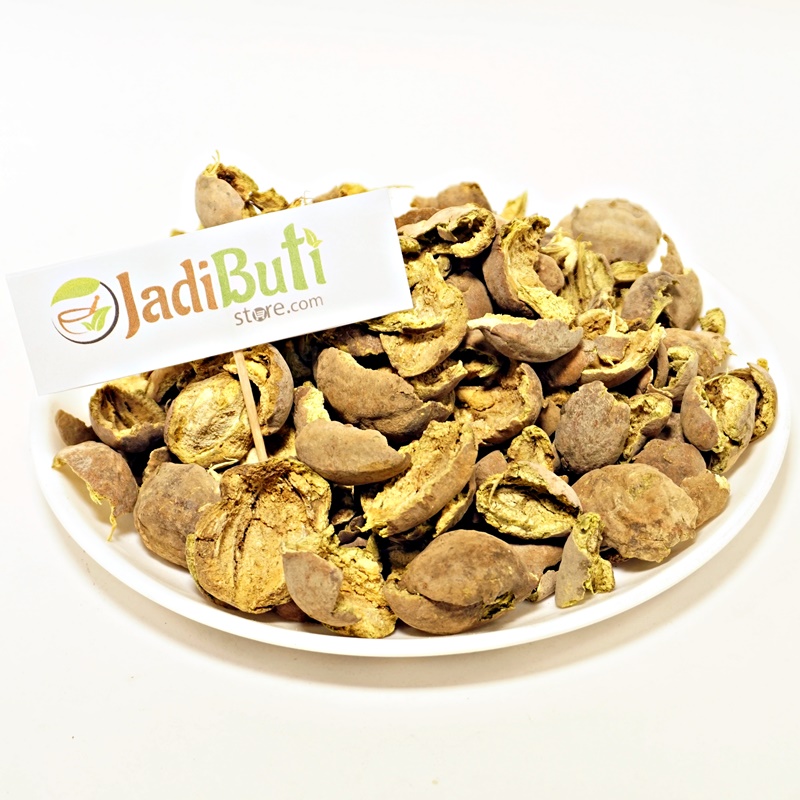
Baheda – बहेड़ा – Bedda chilka – Terminalia bellirica
₹110.00 – ₹865.00Quick ViewCommon Name English Name Scientific Name Part Used Baheda Belleric Myrobalan Terminalia bellirica Fruit, Seed, Bark, Leaves Ayurvedic classification of Baheda (Terminalia bellirica):
Ayurvedic Classification Description Rasa (taste) Astringent, bitter, and sweet Guna (qualities) Light, dry, and sharp Virya (potency) Heating Vipaka (post-digestive effect) Sweet Dosha effect Pacifies Kapha and Vata doshas Karma (actions) Rejuvenative, tonic, laxative, expectorant, and anti-inflammatory Dhatu (tissue) affinity Works primarily on the respiratory and digestive tissues Srotas (channel) affinity Works primarily on the respiratory and digestive channels Prabhava (special effect) May help to improve vision and promote healthy eyes Active compounds and their benefits found in Baheda (Terminalia bellerica):
Active Compound Benefits Gallic acid Antioxidant, anti-inflammatory, and neuroprotective properties Ellagic acid Antioxidant, anti-inflammatory, and anticancer properties Chebulagic acid Antioxidant, anti-inflammatory, antimicrobial, and anti-diabetic properties Chebulinic acid Antioxidant, anti-inflammatory, and hepatoprotective properties Tannins Antioxidant, anti-inflammatory, and anti-cancer properties Phytosterols Cardiovascular health benefits, cholesterol-lowering properties β-sitosterol Anti-inflammatory and immune-boosting properties Lupeol Anti-inflammatory, anti-tumor, and anti-microbial properties Quercetin Anti-inflammatory, antioxidant, and anti-cancer properties Galloylglucose Anti-inflammatory, antioxidant, and anti-cancer properties -


Baheda – बहेड़ा – Bedda Nuts – Terminalia bellirica
₹110.00 – ₹865.00Quick ViewBaheda : Whole Nut
Common Name English Name Scientific Name Part Used Baheda Belliric Myrobalan Terminalia bellirica Fruit and Seed Ayurvedic classification of Baheda (Terminalia bellirica):
Ayurvedic Classification Description Rasa (taste) Astringent, bitter, and sweet Guna (qualities) Light, dry, and sharp Virya (potency) Cooling Vipaka (post-digestive effect) Sweet Dosha effect Balances all three doshas, but particularly pacifies Kapha and Pitta Karma (actions) Rejuvenative, astringent, expectorant, carminative, laxative, and antidiarrheal Dhatu (tissue) affinity Works primarily on the respiratory, digestive, and reproductive tissues Srotas (channel) affinity Works primarily on the respiratory, digestive, and reproductive channels Prabhava (special effect) Nourishes and strengthens the hair, skin, and nails Active compounds and their benefits found in baheda:
Active Compound Benefits Gallic acid Antioxidant, anti-inflammatory, and anti-cancer properties Ellagic acid Antioxidant, anti-inflammatory, and anti-cancer properties Tannins Antioxidant, anti-inflammatory, and anti-diabetic properties Vitamin C Antioxidant, immune-boosting, and anti-inflammatory properties β-Sitosterol Anti-inflammatory, immune-boosting, and cholesterol-lowering properties Kaempferol Antioxidant, anti-inflammatory, and anti-cancer properties Quercetin Antioxidant, anti-inflammatory, and anti-cancer properties Chebulagic acid Anti-inflammatory, anti-cancer, and anti-diabetic properties -
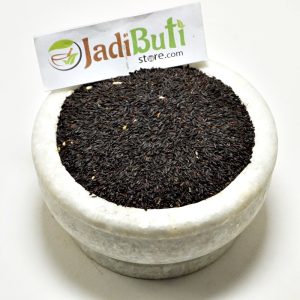
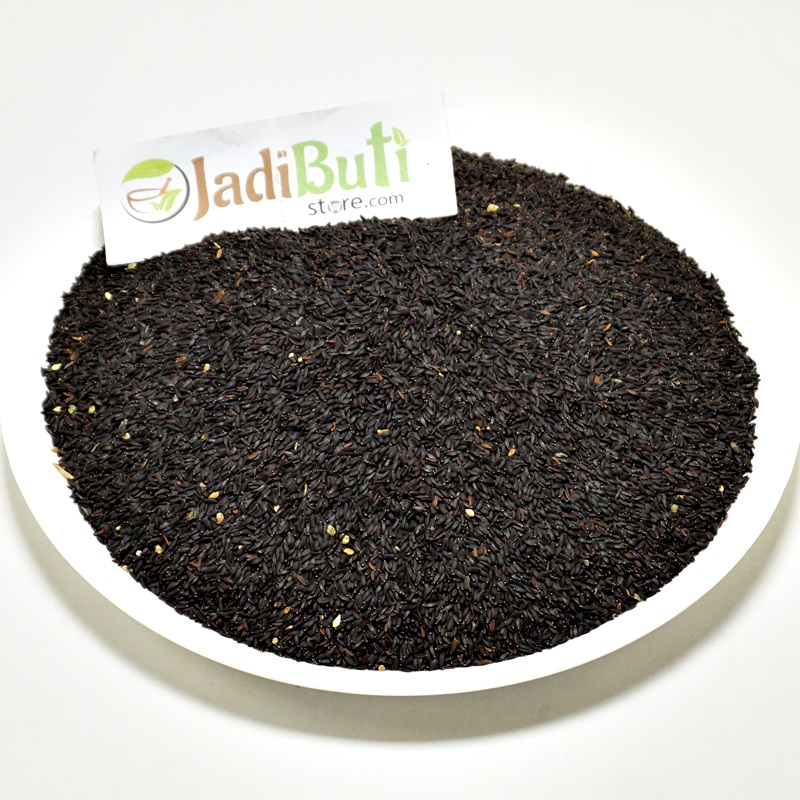
Balanga – बलांगा – Tulsi Balanga – Lalmentiya rai
₹200.00 – ₹1,350.00Quick ViewBalanga – बलांगा – Tulsi Balanga – Lalmentiya rai.
Balanga Name in different languages:
Balanga English : TULSI BALANGA
Balanga Hindi : Balanga, Dhari, Gharei, Kasmalu, Tukhambalanga
Balanga Latin : Lalmentiya rai, Liyana
Balanga Marathi : Balanga, Balamgu
Balanga Gujarati : Tutalanga, Tok malanga
-
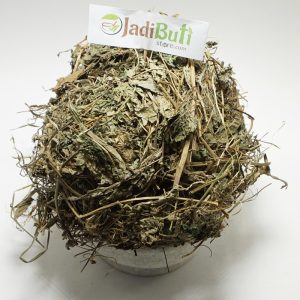

Banafsha Patta – बनफसा पत्ता – Sweet Violet – Viola odorata
₹220.00 – ₹1,685.00Quick ViewBanafsha Sada – बनफसा सादा – Sweet Violet – Viola odorata.
Banafsha Sada Name in Different Language
Banafsha Sada in English name – Sweet Violet
Banafsha Sada in Hindi name – Banafsha Sada
Banafsha Sada in Latin name – Viola odorata
-


Banslochan pure – बंसलोचन असली – Tabasheer pure – Bambusa Arundinacea
₹480.00 – ₹3,695.00Quick ViewBanslochan pure – बंसलोचन असली – Tabasheer pure – Bambusa Arundinacea camphor.
Banslochan Latin name – Bambusa vulgaris
Banslochan Hindi name – Banslochan
Banslochan Urdu name – Tabasheer
Bambusa Arundinacea (also known as bamboo camphor or camphor bamboo) is a species of bamboo that is commonly used in traditional Ayurvedic medicine for various health benefits. Some of the benefits of Bambusa Arundinacea include:
- Respiratory Health: Bambusa Arundinacea is believed to have a soothing effect on the respiratory tract and is used to treat respiratory issues, such as coughs, colds, and bronchitis.
- Anti-inflammatory Properties: Bambusa Arundinacea is believed to have anti-inflammatory properties and is used to treat various inflammatory conditions, such as arthritis, gout, and rheumatism.
- Digestive Health: Bambusa Arundinacea is believed to improve digestive health and relieve digestive problems, such as bloating, gas, and constipation.
- Skin Health: Bambusa Arundinacea is said to have anti-inflammatory properties and is used to treat various skin conditions, such as rashes and irritations.
- Blood Sugar Control: Bambusa Arundinacea is said to have a stabilizing effect on blood sugar levels and is used to treat diabetes.
- Wellbeing: Bambusa Arundinacea is believed to have aphrodisiac properties and is used to improve Desire and performance.
-
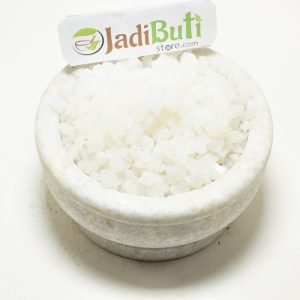

Banslochan White – बंसलोचन – Tabasheer – Tabasir Crystal
₹90.00 – ₹690.00Quick ViewTabasheer, also known as bamboo silica, is a substance derived from the bamboo plant that has been used in traditional medicine for centuries and may have a range of potential health benefits, including promoting healthy bones and joints, improving skin health, enhancing cognitive function, supporting cardiovascular health, aiding digestion, promoting hair and nail health, having anti-inflammatory properties, helping to detoxify the body, supporting immune system function, and improving respiratory health.
-
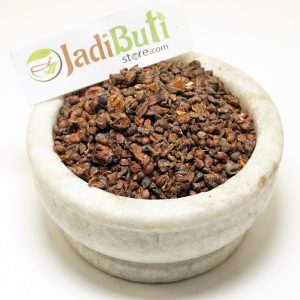
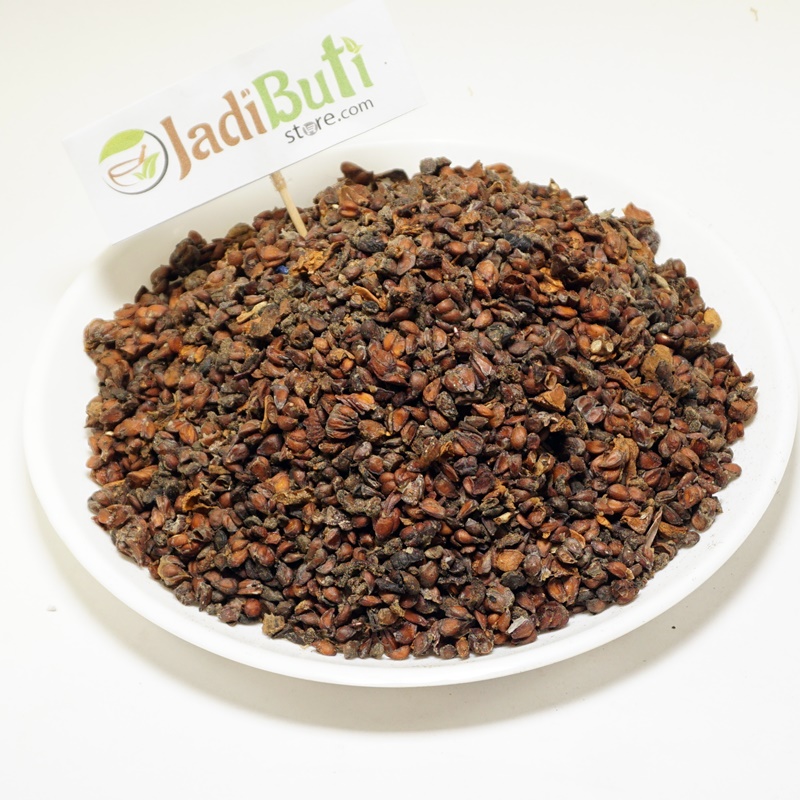
Bedana – बेदाना – Lythraceae – Pomegranate
₹430.00 – ₹3,410.00Quick ViewBedana – बेदाना – Lythraceae – Pomegranate.
- English: Pomegranate
- Spanish: Granada
- French: Grenade
- German: Granatapfel
- Italian: Melograno
- Portuguese: Romã
- Arabic: رمان (rummān)
- Hindi: अनार (anār)
- Persian: دارچین (dārchin)
- Sanskrit: दारुकं (dārukaṃ)
- Chinese: 石榴 (shíliú)
- Japanese: ザクロ (zakuro)
- Russian: гранат (granat)
- Turkish: nar
Key Benefits
- Boosts Immune System: Pomegranate is considered to be a natural immune booster and is often used in Ayurveda to increase resistance to diseases.
- Promotes Heart Health: The fruit is rich in antioxidants and has been shown to have a positive effect on heart health by reducing oxidative stress, lowering blood pressure, and reducing the risk of heart disease.
- Supports Digestion: Pomegranate is a rich source of fiber, which can help regulate digestion and prevent constipation. The fruit is also said to help improve the digestion of proteins and fat.
- Anti-inflammatory Properties: Pomegranate has anti-inflammatory properties that can help reduce inflammation in the body, making it beneficial for individuals with conditions such as arthritis, gout, and other inflammatory diseases.
- Anti-cancer Properties: Some studies have suggested that pomegranate may have anti-cancer properties and may be effective in reducing the risk of certain types of cancer, such as prostate cancer.
- Promotes Healthy Skin: Pomegranate is high in vitamin C, which is essential for maintaining healthy skin. The fruit is also rich in antioxidants that can help protect the skin against oxidative stress and damage caused by free radicals.
-


Beej Band – BALA BEEJ – Country mallow – Sida cordifolia
₹140.00 – ₹1,075.00Quick ViewAyurvedic classification of Sida cordifolia (Bala):
Ayurvedic Classification Description Rasa (taste) Sweet, bitter, astringent Guna (qualities) Light, dry Virya (potency) Heating Vipaka (post-digestive effect) Sweet Dosha effect Balances Kapha and Vata doshas Karma (actions) Rejuvenative, tonic, anti-inflammatory, analgesic, diuretic, aphrodisiac, and expectorant Dhatu (tissue) affinity Works primarily on the muscle, bone, and reproductive tissues Srotas (channel) affinity Works primarily on the urinary, respiratory, and reproductive channels Prabhava (special effect) Enhances strength and vitality .
Active Compound Benefits Ephedrine Decongestant, bronchodilator, and stimulant properties Pseudoephedrine Decongestant and bronchodilator properties Vasicine Expectorant, bronchodilator, and anti-inflammatory properties Vasicinone Expectorant, bronchodilator, and anti-inflammatory properties L-Dopa Anti-Parkinson’s disease and mood-enhancing properties Beta-Sitosterol Anti-inflammatory, antioxidant, and cholesterol-lowering properties Kaempferol Antioxidant and anti-inflammatory properties Quercetin Antioxidant, anti-inflammatory, and immune-boosting properties -
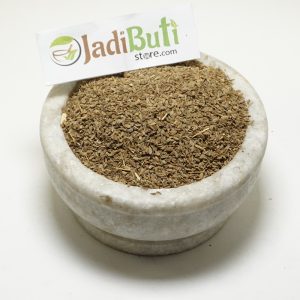

BEEJ GAJAR – बीज गाजर – CARROT SEEDS – DAUCUS CAROTA
₹80.00 – ₹615.00Quick ViewBEEJ GAJAR – बीज गाजर – CARROT SEEDS – DAUCUS CAROTA.
GAJAR Name in different languages:
GAJAR English Name : Carrot
GAJAR Hindi Name : Gajar, Gajra
GAJAR Latin name : Daucus carota Linn.
GAJAR Urdu Name : Gajar
GAJAR Arabic Name : Jazar, Istufleen, Nahshal, Subaat’iyya
GAJAR Bengali Name : Gajar
GAJAR Chinese Name : Hu luo bo
GAJAR French Name : Carotte cultivé
GAJAR German Name : Karotte, Möhre
GAJAR Gujarati Name : Gajar
GAJAR Kannada Name : Gajjari
GAJAR Kashmiri Name : Gazer, Gazaer
GAJAR Marathi Name : Gajar
GAJAR Persian Name : Gazar, Zardak
GAJAR Punjabi Name : Gajar
GAJAR Sanskrit Name : Garjara, Shekhamulama
-
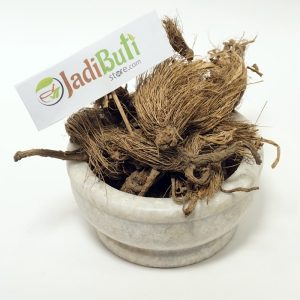
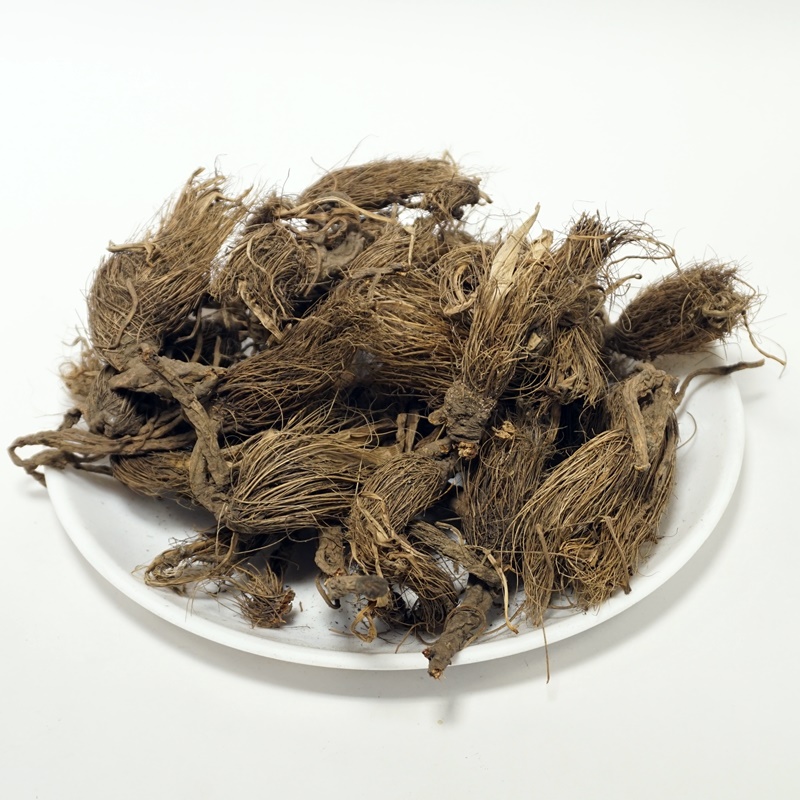
Beg Kharfas – Bhoot Kesari – Indian milk parsley – Selinum vaginatum
₹160.00 – ₹1,250.00Quick ViewBeg Kharfas (Bhoot Kesari).
Jadi Buti Bhoot Kesari is a potent herbal component which is capable of managing cholesterol levels. It helps keep the body weight in control.
Ayurvedic classification of bhutkesi (Selinum vaginatum):
Ayurvedic Properties Dosha Effects Rasa (Taste) Bitter, Pungent, Astringent Guna (Qualities) Light, Dry Virya (Potency) Heating Vipaka (Post-Digestive Effect) Pungent Dosha Effect Balances Kapha and Pitta, aggravates Vata Benefits of bhutkesi (Selinum vaginatum):
Active Compounds Potential Health Benefits Alkaloids Anti-inflammatory, analgesic, anti-rheumatic, anti-spasmodic properties Flavonoids Antioxidant, anti-inflammatory, cardiovascular benefits Terpenoids Antimicrobial, digestive health, immune system support, skin health -
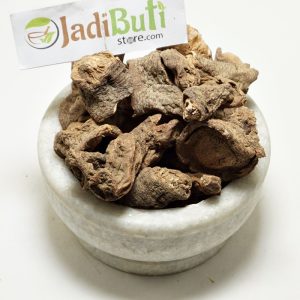
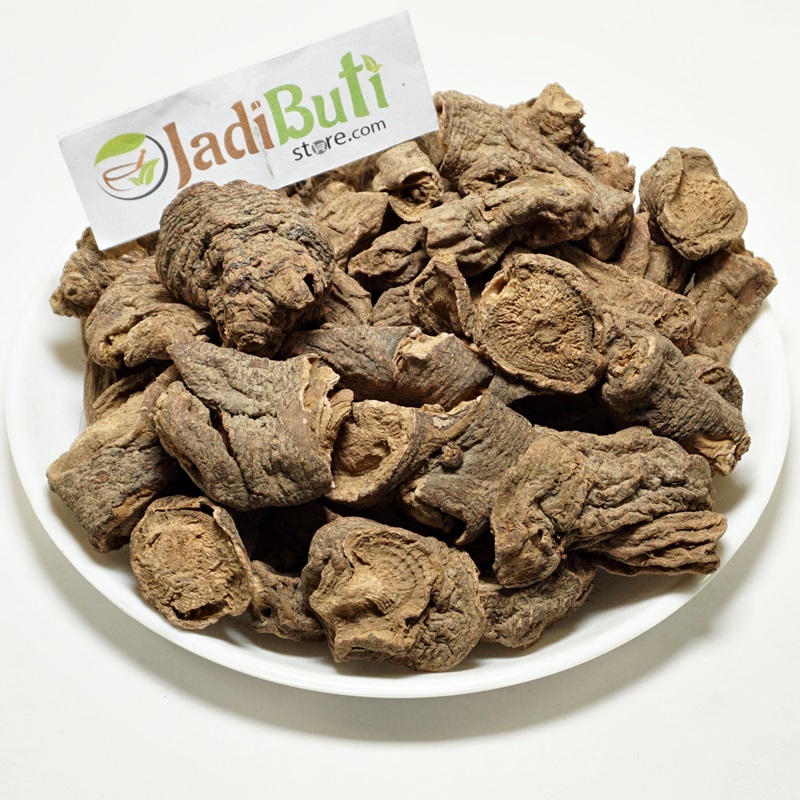
Behman Lal – बहमन लाल – Red Sage – Salvia haematodes Linn
₹110.00 – ₹765.00Quick ViewBehman Lal – बहमन लाल – Red Sage – Salvia haematodes Linn.
Behman Lal Name in different languages:
Behman Lal English Name : Red Sage, Garden Sage, Dalmation Sage, Common Sage
Behman Lal Hindi Name : Lal Bahaman बहमन लाल
Behman Lal Latin name : Salvia haematodes Linn.
Behman Lal Urdu Name : Behman Surkh
Behman Lal Arabic Name : Naa’ima, Saalbiya, Saalfiyaa, Bahman Abyad
Behman Lal Bengali Name : Lal Behman
Behman Lal Chinese Name : Dan shen
Behman Lal French Name : Sauge Rouge
Behman Lal German Name : Wiesensalbei
Behman Lal Persian Name : Behman Surkh
-
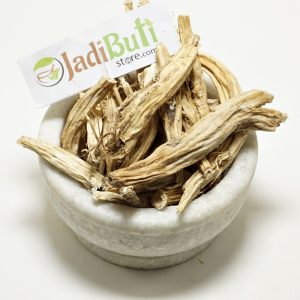

Behman safed – बहमन – White Behen – Centaurea behen Linn
₹140.00 – ₹965.00Quick ViewBehman safed – बहमन – White Behen – Centaurea behen Linn.
Behman safed Name in different languages:
Behman safed English Name : White Behen
Behman safed Hindi Name : Safed Behman
Behman safed Latin name : Centaurea behen Linn.
Behman safed Urdu Name : Behman Safed
Behman safed Arabic Name : Bahman Aswad
Behman safed French Name : Behen Blanc
Behman safed German Name : Behenflockenblume, Rübendistel
Behman safed Persian Name : Behman Safed
